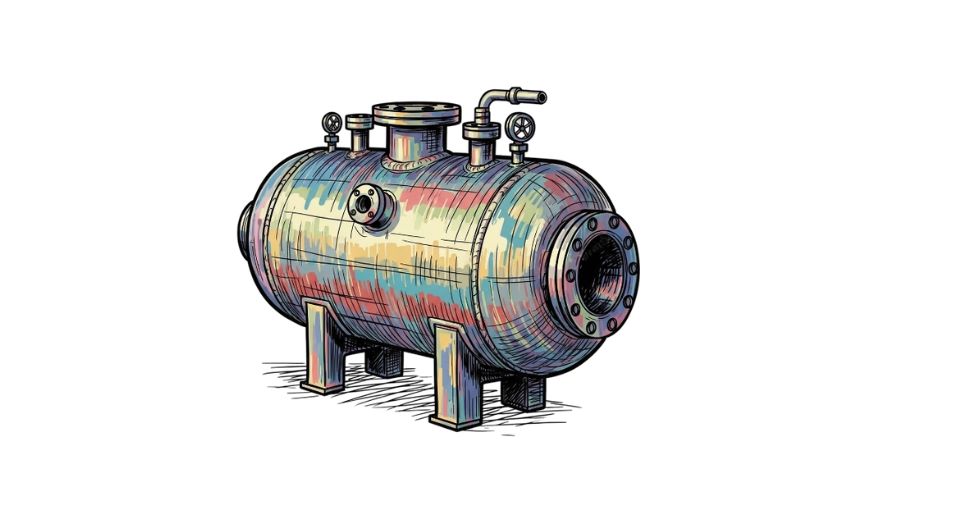
Jun 27, 2025

The recent report published by Metastat Insight on the Global Pressure Vessels market takes a deep dive into the current dynamics and industrial climate around this intricate industry. Far from providing surface-level generalities, the report uncovers subtle insights on how this industry operates within different geographical environments and industrial uses. It doesn't just deliver a surface sweep but rather delves into the complex layers which characterize the market's structure, delivery chains, and end-user flexibility. With its specialized outlook, it illuminates changes far beyond typical forecasts or typical growth patterns.
It is built on its core at the base, the industry for pressure vessels is based on a combination of engineering precision and regulatory discipline. The vessel, rather than being a mere container, is a basic unit of operation for numerous processes in industries as diverse as chemical processing, energy, and water treatment. Of particular interest is the way that its uses have increasingly diverged, as manufacturers continually adapt designs to conform to application-specific requirements. Those adaptations, based on the demands of operational safety and efficiency, are generating more application-specific demands than common outputs. Therefore, the Global Pressure Vessels market does not adhere to a predictable trend but keeps evolving on a permanent basis according to sector-specific changes.
One of the larger changes noticed in recent times is the growing requirement for special pressure vessels designed to operate under highly specific operating parameters. This has added an extra level of specialization within production units. Fabricators are not working in a universe of universal dimensions and standard criteria anymore; rather, they are working in an industry characterized by engineering collaboration and design iteration. And this, in turn, reshapes supply chains and production lead times, illustrating the way changes in user expectations influence upstream processes in subtle but significant ways.
Geographically, regions vary with different levels of maturity in the industry. In some locations, an entrenched industrial foundation and well-developed compliance frameworks create a relatively stable market. In others, developing regions usually see more accelerated evolutions, wherein infrastructural growth and regulatory catch-up transform the producers' and end-users' operating environment. These distinctions are not merely quantitative ones; they demonstrate divergent mechanisms by which institutions, industrial policy, and end-user industries affect pressure containment demand. What comes forward is a multifaceted picture instead of a uniform account.
In the context of these regional accounts is the increasing interest in materials science and design innovation. There is a conscious move towards creating vessels that will withstand more stress at a smaller size and with reduced resource use. Testing and research, previously the domain of university settings, are now a part of the business model itself of manufacturers who realize innovation not as a strength but a survival necessity. With international regulations now demanding increased safety and lowered emissions, there is increasing demand for lighter, corrosion-resistant materials that can withstand performance over longer cycles of use. These initiatives depict a design ethos prioritizing longevity and compliance as much as functionality.
The engineering part of the Global Pressure Vessels industry now increasingly combines with software-based modeling and digital diagnostics. Manufacturers increasingly employ simulations in the design stage to predict stress points, minimize metal fatigue, and optimize pressure levels. These strategies are assisting in declining testing failures and wastage. As technology becomes increasingly sophisticated, the line between old-fashioned mechanical engineering and new-fangled digital monitoring blurs. The ship of the day is no longer merely required to hold, but to speak—alerting when maintenance is needed, sensing irregularity, and connecting with larger operational networks.
It is impossible to miss the way the supply chain itself has been altered by this incremental technological integration. Manufacturers have had to find more advanced inputs and build working relations with vendors that can ensure performance tolerances at the microscopic level. This has created new business models, as makers frequently work in close partnership with their upstream vendors on joint R&D initiatives. The supporting supply structure of the Global Pressure Vessels market has therefore shifted from transactional to integrative, enabling richer innovation throughout the lifespan of every product.
In addition, external volatilities like global logistics volatility and energy availability increasingly have a more visible impact. Whereas materials acquisition and product supply used to follow fairly predictable channels, now contingency planning and diversified sourcing are required more than ever. Most stakeholders are not just responding to disruptions but are recasting their operational structures to insulate against volatility. This feeling of readiness has informed investment in local and decentralized production centers, aimed at delivering quicker response times and enhanced independence.
As the wide-ranging report published by Metastat Insight identifies, the Global Pressure Vessels market is not fixed but constantly undergoing reorganization, driven equally by technological innovation as by local requirements and operational recasting. It discloses an industry that has expanded not through conformity with one model but through ongoing adaptation to the changing priorities of safety, customization, and innovation. With more attention to material performance, digitization, and multi-regional sourcing strategies, the industry keeps going on a path defined not by enlargement but by introspective transformation. The report leaves no room for doubt that individuals working in this industry have to adopt flexibility and technical insight as the base for long-term operations in the future.
Drop us an email at:
Call us on:
+1 214 613 5758
+91 73850 57479